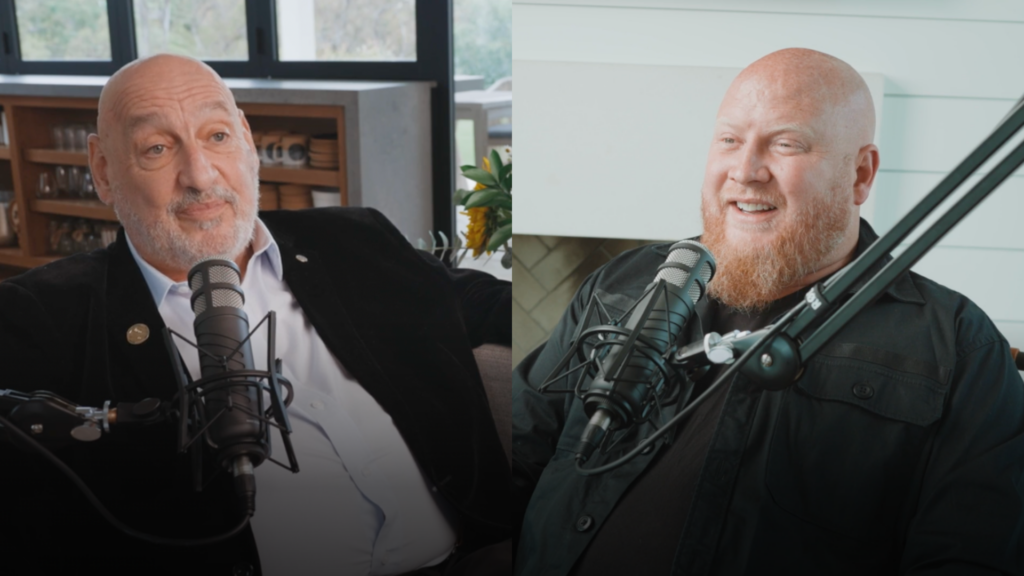In the immortal words of Bono (or Paul Hewson if you find his LinkedIn…don’t go looking; it is not there), “I still haven’t found what I’m looking for.” We wonder if he will ever find what he is looking for and what he would need to do to succeed in his pursuit.

Why You Still Haven’t Found What You’re Looking For
Let’s imagine for one moment that Bono was a talent acquisition rockstar (track with us here). I’d imagine his song would go something like this…
I have climbed the highest mountains
I have run through the fields…
Only to speak to you
I have posted on job boards.
I have asked for referrals.
Only to speak with you.
But I still haven’t found what I’m looking for.
I have rung, I’ve cold-called.
Used Indeed, and LinkedIn Gold
But I still haven’t found what I’m looking for.
If you’re like us, you might ask the question, “did he define what he was looking for in the first place? Would he know what he was looking for if he found it? I guess this will be one of life’s unanswered questions. We may never know.
What we do know is a question that we can answer. What do you need to do, that you might not first think of when finding the perfect candidate for your open role?
In today’s competitive job market, finding the “right person” for a job is critical for an organization’s success. There doesn’t seem to be a shortage of candidates; people are open to exploring new opportunities, but top performers, that’s another story.
Layoffs mean surplus, right? Quiet Quitters who want out. You might get lucky and find a fantastic candidate who has gone through a tough time… you might get lucky. In reality, top performers have likely already lined up their next role before the layoff happens. With over 80% of jobs found through referrals or existing relationships, finding someone out of the blue is a tall order.
Top performers look for three elements:
- Impact
- Growth
- Stretch
If you want to attract a candidate to your company or the very least, provide enough intrigue to start the conversation, you need to build a clear picture of the performance objectives associated with the role.
Notice the above three elements have nothing to do with skills, tasks, or activities. Yes, those elements are a part of it, and we will discuss that later, but that’s not the story or journey that excites a candidate.
In his book, “Right Seats, Right People,” our CEO & Visionary, Jonathan Reynolds, emphasizes the importance of finding the right match between the opportunity and the candidate. He argues that before building a profile for a candidate, organizations should first define the job role and understand what skills, experience, and personality traits are necessary for success in that role; what does this person need to achieve versus what does this person do?
Defining the “right seat” for a role involves understanding the responsibilities, expectations, and qualifications required. This includes not only the technical skills but also the soft skills that are essential for success in the role. For example, that looks like the difference between a job description that says, “A salesperson must have excellent communication skills, be persuasive, and be able to build relationships with clients,” versus “You’re passionate about connecting people with what’s valuable to them.” Success in this role looks like converting conversations into concrete opportunities that lead to X amount of new business with a retention rate of x%.
The most critical step that most teams overlook:
Unification within the hiring process is paramount to creating the right seat.
Imagine the scenarios below; maybe it is something you have personally experienced. We’ll use an HR role as an example:
- The team lead wants someone who has x years of experience and went to a particular school and has experience working with unions. This person needs to be a proactive and driven individual on the fast track to upper management.
- The department director wants to find someone at a particular comp range who can handle the work of two people. This person needs to have come from a competitor and be more focused on taking a creative approach as opposed to getting lost in the weeds.
- The person that the candidate will be reporting to wants support in a particular area that will free up their time. They want someone who can focus on the details as they have the strategy in mind. They want someone less outgoing and more process-oriented. They need to be detail-oriented and more compliant than driven.
Something is going to have to give. What looks like a great hire to one, would be a terrible hire to another. This is one of the main reasons we utilize the Predictive Index benchmark. By helping hiring teams get on the same page, we can bring a level of measurable objectivity to the process and prevent any unnecessary barriers to entry.
Once the “right seat” is defined, the organization can look for the “right person” for the job. This involves identifying candidates who possess the necessary skills, experience, and behavioral traits required for success in the role. A candidate who has the required technical skills but lacks the necessary soft skills may not be the “right person” for the job.
Moreover, a candidate who possesses the required technical and soft skills but doesn’t fit the organization’s culture may also not be the “right person” for the job. Reynolds emphasizes that cultural fit is a critical aspect of finding the “right person” for a job. An employee who doesn’t align with the organization’s values and goals may not be able to perform to their full potential, even if they have the necessary skills.
This is where the Head, Heart, and Briefcase shine!
- Heart – values, motivations, missional alignments, desired growth trajectory.
- Head – behavioral and cognitive data points that can be accurately measured against the quantified needs of the team they will be joining.
- Briefcase – the skills and experience they possess, along with the achievements and accomplishments gained through using them.
In conclusion, the “right seat, right person” concept highlights the importance of defining and understanding the job role before building a candidate profile. This approach ensures that organizations can identify the necessary skills, experience, and behavioral traits required for success in the role. By finding the “right person for the right seat,” organizations can increase productivity, decrease turnover, and ultimately achieve their business objectives.
Partner with Titus Talent Strategies
More than recruiters, Titus Talent Strategies is a team of Talent Optimizers who genuinely care about the work we do for you. We empower companies to put the right people in the right seats through informed, connected strategies that combine data with an empathetic understanding of what makes people tick. We recognize that our partners are investing in us and that results mean more than just people placed in a role. It’s about impact and connection.
TITUS INSIGHTS
Refreshing perspectives and practical expertise from the Titus team.
Committed To Radical Generosity
Our dedication to radical generosity keeps us focused on what matters most, and it allows us to make a trusted and lasting impact on the world around us. It’s the foundation of our culture and our partnerships.



